The Royal Museum of the Armed Forces and Military History in Brussels is no more. It has been no more since a while, actually. Welcome to the Royal Military Museum, part of the War Heritage Institute (WHI).
“The mission of the War Heritage Institute (WHI) is to promote Belgium’s military heritage, the remembrance of armed conflicts on Belgian soil, and those involving Belgians abroad”, the WHI website says.
“This mission involves managing, acquiring, preserving, and restoring collections of objects, documents, and intangible testimonies from the period extending from the Middle Ages to the present day. For this purpose, the WHI manages and oversees a network of exceptional museums and military sites. The WHI thus presents a multi-disciplinary interpretation by situating these sites back into their military, political, technological, economic, social, and cultural contexts. One of its aims is to convey the memory of these armed conflicts by developing creative and stimulating initiatives aimed at various audiences. In addition, it carries out international scientific research into military history and heritage.”
So, the WHI manages
- the Royal Military Museum;
- the Fort of Breendonk;
- the Bastogne Barracks;
- Comand Bunker Kemmel;
- the Trench of Death in Dixmude;
- Gunfire Brasschaat.
History of the Royal Military Museum
For the 1910 world fair a young officer, Louis Leconte, brings together some nine hundred objects illustrating Belgium’s military past, the WHI website explains.
The exhibition meets with great success and the authorities decide to maintain the collection, to house it in the former Military Academy buildings at La Cambre Abbey and to put Louis Leconte in charge. The Military Museum is born.
After World War I the ensemble grows through gifts and donations by foreign governments. Leconte can also take his pick from equipment left behind by the Germans. The collections are bursting at the seams and a move becomes imperative. In 1923 the museum takes possession of the north wing of the Jubilee Palaces. Louis Leconte, who left active military service, is appointed curator in chief.
During World War II the Germans occupy the museum and the institution only reopens after the conflict. The Museum then diversifies and creates new departments: military history, archives and library, print room and map room. In that way, the institution’s scientific character is put into the limelight and concepts such as conservation, restoration and presentation become key factors.
New sections are established: in 1972 the Air and Space section sees the light of day and in 1980 the armoured vehicle section is opened. In 1986 the museum welcomes the magnificent arms and armour collection formerly on display at the Hal Gate Museum . In 1996 the Navy finds a safe harbour at the museum. All forces are thus represented.
The Military Museum today
“Today the Royal Military Museum occupies no less than five large exhibition galleries covering more or less 40,000 m2. The architecture and the atmosphere are unique. From the Historic Gallery with its displays recalling times long gone to the Bordiau Gallery with its modern museology: in his wanderings through the museum the visitor not only discovers evolving collections, but also new presentations.”
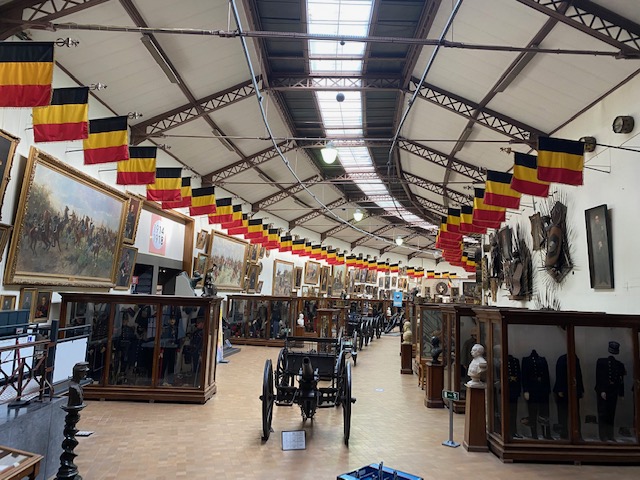
Jubilee Park
The Royal Military Museum is located in Brussels’ Jubilee Park, Jubelpark or Parc du Cinquantenaire.
In the 19th century the Jubilee Park is then just an exercise ground for the Civic Guard who holds its Sunday meetings there. Urban expansion creates a residential area, connecting the town to its suburbs.
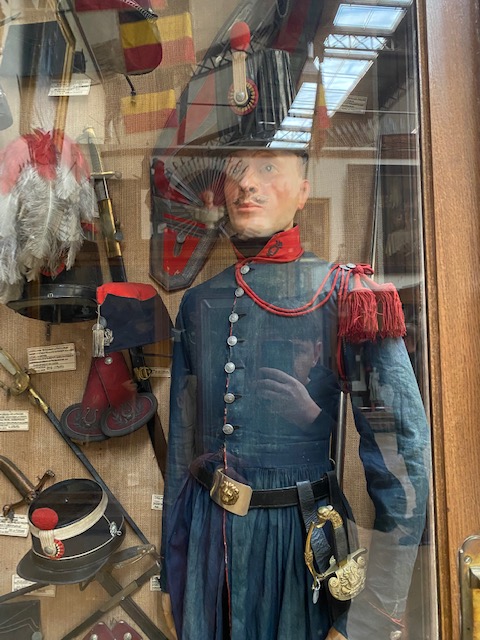
In 1875 Belgian architect Gédéon Bordiau draws what is to become the Jubilee Park: for the fiftieth anniversary of Belgian independence he imagines a green belt with exhibition buildings. The idea meets with general approval and it is even decided to extend the park. Later, in 1888, for the Great International Contest for Science and Industry, the complex receives its definitive name: the Jubilee Park.
The build of the arcades starts in 1890. Financial problems however kill the project and the elements already completed are topped with a plaster-of-Paris construction for the world fair of 1897. Bordiau’s death in 1904 causes further delays. King Leopold II then calls on French architect Charles Girault. The latter redraws the blueprints and realizes a majestic triple arch in record-breaking time. The monument is inaugurated on September 27, 1905, for the 75th anniversary of Belgian independence.
Later adjustments are made for the 1910 world fair and the park then largely obtains its present-day aspect: two wings consisting of great halls connected to each other by a semi-circular colonnade and an impressive triple arch as an architectural eye-catcher.
Today only the Military Museum still possesses the original building as designed by Bordiau, for the one used by the Royal Museums for Art and History burnt down in 1946, only to be replaced by a modern building, thus forever breaking the symmetry of the original set-up.

A visit
I visited the Royal Military Museum in September 2022 with Attila from Hungary. I hadn’t seen him since the Forum for European Journalism Students conference in Ljubljana, Slovenia and Sarajevo, Bosnia and Herzegovina in 2003. Yes, 2003.
It was my second time at the museum. My first time was the 21st of July 2019. Another era entirely, pre-COVID-19 and pre-energy pricing crisis.
The Historic Hall is still very impressive. Completely outdated in its presentation and set-up, but that’s the attraction. The set-up gives an insight on how things were done and seen so many decades ago.
Display cabinets with outdated mannequins and handwritten index cards. Terrible, but so lovely. It glorifies military campaigns and adventures we shouldn’t glorify. But just leave it like that. Or no: give it context and explanations, but don’t touch it.
But there’s is more. There is the WW I Hall which has been updated but a long time ago and the more up to date WW II Hall.
Noteworthy are the many foreign objects and uniforms. It’s refreshing to see uniforms from Romania, Greece or Finland. King Albert I‘s British and Belgian uniform. All his foreign awards and decorations.
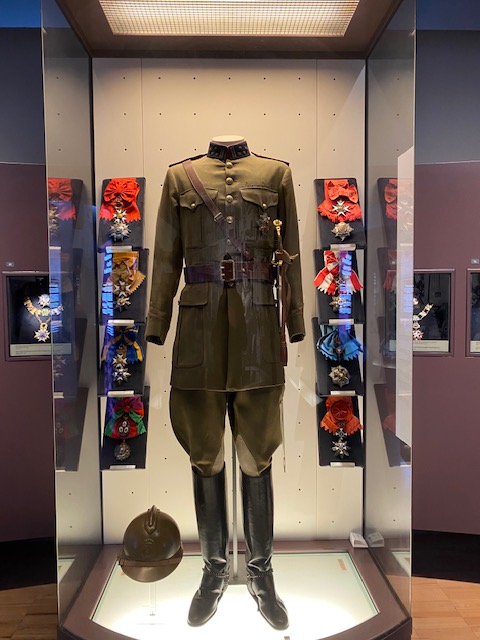


There’s a special spot for émigré Russian objects. The aristocracy of Russia fled the Soviets on 1917 to Paris. When communists gained power there, they fled to Brussels with their artifacts.


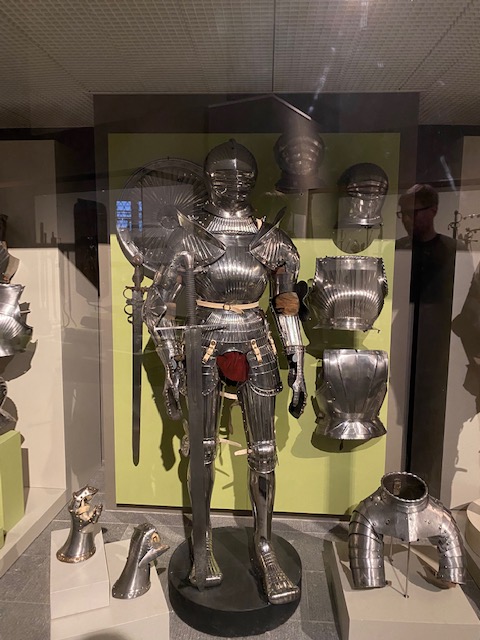

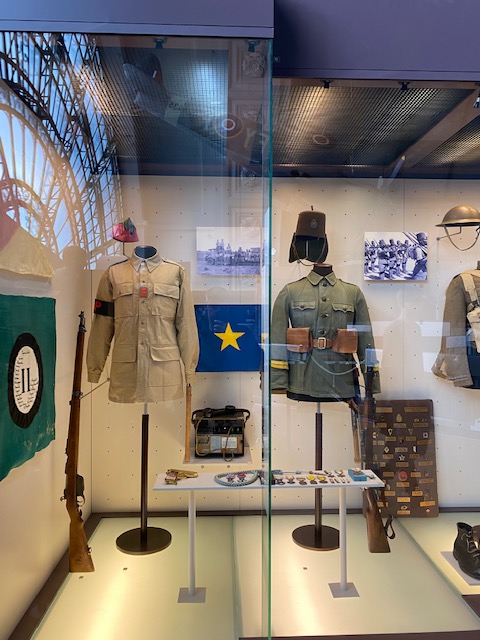



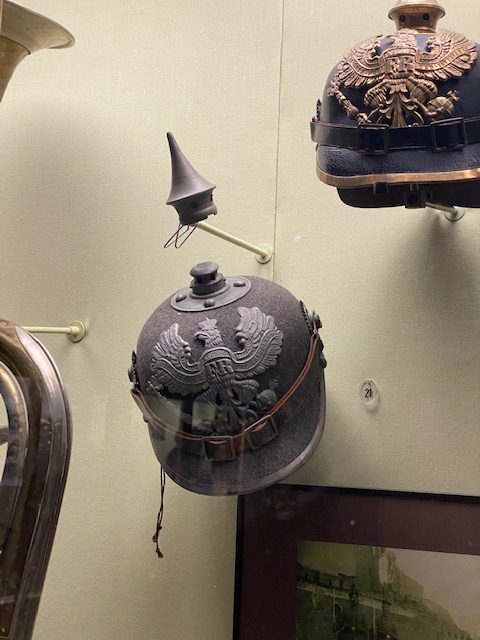
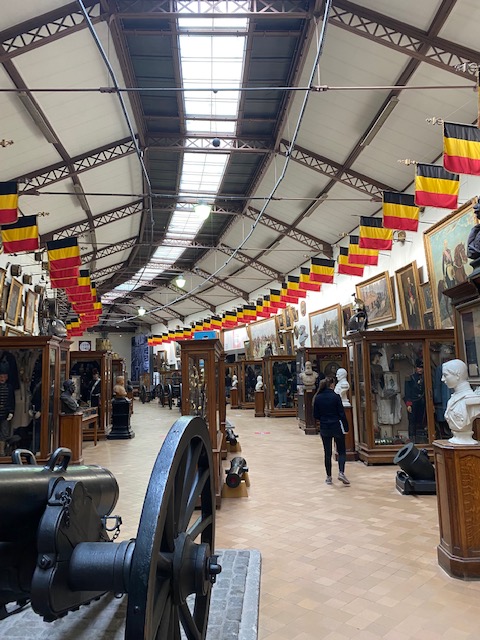
It’s a good museum, but it needs updating, honestly. Also, the sequence of exhibits is sometimes hard to follow. We went from WW II to pre-WW II to Interbellum, to… confusing.
The collection is just huge. World Wars, Air & Space. It doesn’t end. I spent two hours inside. I need more. Don’t forget the panorama, by the way.
Exploring Brussels
- RIDE & DINE | Brussels Tram Experience.
- REVIEW | M-Gallery Le Louise in Brussels.
- ‘Bond in Motion’ 007 Exhibition at Brussels Expo.
- Inside the Royal Palace of Brussels.
- Brussels’ Atomium.
- REVIEW | Orient-Express exhibition at Train World, Brussels’ railway museum.
- REVIEW | Louis de Funès exhibition at Cinéma Palace Brussels.
- REVIEW | David Hockney double exhibition at Bozar Brussels’ arts museum.
- The orange world of Design Museum Brussels.
- AfricaMuseum in Tervuren near Brussels.
- Brussels Planetarium.
- Brussels’ Gare Maritime.
- REVIEW | Comics Art Museum Brussels by the Belgian Comic Strips Center.
- Brussels’ Pannenhuis Park and L28 Park.
- Brussels’ Senne Park.
- The Hotel. Brussels.
- REVIEW | ‘Royals & Trains’ exhibition at Train World in Brussels.
- Ducal and Imperial Palace of Coudenberg in Brussels.
- MIMA – Millennium Iconoclast Museum of Art in Brussels.
- Villa Empain in Brussels.
- Pullman Brussels Centre Midi.
- Autoworld automobile museum in Brussels.
- Royal Museum of the Armed Forces and Military History in Brussels, Belgium.
- REVIEW | Thalys Lounge at Brussels South/Midi station.
- PHOTOS | Train World railway museum in Brussels.
- BRUSSELS | Exploring gay intimacy and sexuality at ‘In The Mood For Love’ exhibition.
- Josaphat Park and residential Schaerbeek.

Interesting museum.
Thank’s for share Timothy.
Nice Sunday!
LikeLiked by 1 person
Thank you Elvira
Have a great Sunday.
LikeLiked by 1 person
Always a pleasure.
You as well, Timothy.
LikeLiked by 1 person